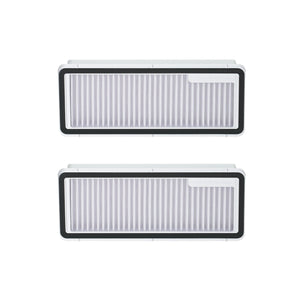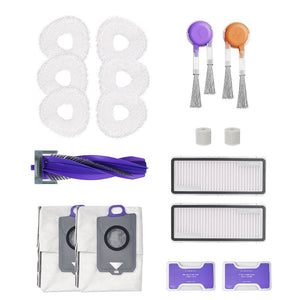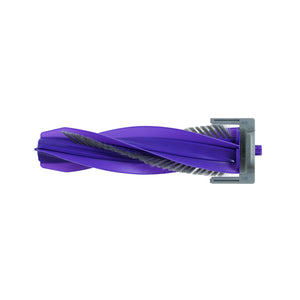Ever wonder how a robot vacuum knows when it’s cleaning carpet or hardwood?
That’s where floor type detection comes in — the smart technology that helps vacuums sense surface changes and adjust suction, speed, and mopping power automatically. From saving battery life to protecting delicate floors, this adaptive cleaning system makes modern robot vacuums far more efficient and precise.
In this guide, you’ll learn how floor detection works, why it matters, and which technologies make it possible — helping you understand the real future of smart cleaning.
What Is Floor Type Detection and Why Does It Matter?
Floor type detection is the ability of a smart robot vacuum to recognize what kind of surface it’s cleaning—such as carpet, hardwood, or tile—and adjust its cleaning method automatically. This feature relies on sensors and mapping systems that identify texture, height, or resistance changes on the floor. Once detected, the robot switches suction strength, brush speed, or mopping mode to match that surface.
This matters because different floors need different care. Carpets often trap dust deep in the fibers and require stronger suction, while hardwood or tile needs a lighter touch to avoid scratches and save battery power. Without floor detection, a vacuum might clean unevenly, waste energy, or even cause surface damage over time.
Benefits of Floor Type Detection
- Optimized Cleaning: When a robot vacuum knows the type of floor it’s cleaning, it can adjust its cleaning technique accordingly. This means better dirt and dust removal, whether it’s on a thick carpet or a smooth tile floor. The result is a more thorough cleaning throughout your home.
- Battery Efficiency: Different floor types require different levels of effort to clean. Carpets, for example, need more suction power, which can drain the battery faster. By detecting floor types and adjusting the cleaning power, robot vacuums can use their battery more efficiently, leading to longer cleaning sessions without needing to recharge.
- Protection of Floors: Some floors, like hardwood or delicate tiles, can be easily scratched or damaged by too much suction or the wrong brush type. Floor-type detection helps prevent this by allowing the vacuum to adjust its settings, ensuring gentle yet effective cleaning on sensitive surfaces.
These benefits show why it’s crucial for robot vacuums to detect and adapt to different floor types. Not only does it lead to better cleaning results, but it also protects your investment in both your floors and your vacuum.
How Do Robot Vacuums Detect Different Floor Types?
Robot vacuums detect and adapt to different floor types by using a variety of advanced technologies. These technologies include sensor mapping, camera mapping, gyroscope navigation, SLAM, LiDAR, and pressure sensors. Each of these technologies plays a unique role in helping the vacuum navigate and clean your home efficiently.
Sensor mapping
Sensor mapping is one of the earliest and most basic navigation methods used by robot vacuums. It employs a variety of sensors to determine the vacuum’s position on the floor and identify different surface types. Common sensors include cliff sensors to avoid stairs, wall sensors for edge cleaning, and bump sensors to detect obstacles. These sensors work together to help the vacuum navigate around your home and adjust its cleaning method based on the floor type it detects.
Camera mapping
Camera mapping uses built-in cameras to capture images of the floor and surrounding environment. This visual data helps the vacuum distinguish between different surfaces, such as carpet, tile, or hardwood. The camera can also assist in creating detailed maps of your home, which the vacuum uses to plan efficient cleaning paths. Camera mapping enhances the vacuum's ability to avoid obstacles and ensure thorough cleaning of all areas.
Gyroscope navigation
Gyroscope navigation involves using gyroscopes to measure the orientation and movement of the vacuum. This technology helps the vacuum understand its position and direction as it moves across different floor types. By combining data from the gyroscopes with other sensors, the vacuum can navigate more accurately and adjust its cleaning settings based on the floor type it encounters.
SLAM (Simultaneous Localization and Mapping)
SLAM is a sophisticated algorithm that allows the vacuum to create a map of its environment while simultaneously determining its position within that map. This technology uses data from various sensors, including cameras and LiDAR, to build real-time maps of your home. SLAM enables the vacuum to navigate complex environments, avoid obstacles, and adapt to different floor types with high precision.
Lidar (Light Detection and Ranging)
LiDAR technology uses laser light to measure distances to objects in the surrounding environment. It emits laser beams that bounce off surfaces and return to the sensor, providing accurate distance measurements. This data helps the vacuum create detailed 3D maps of your home, allowing it to navigate efficiently and detect different floor types. LiDAR is particularly effective in low-light conditions and provides precise navigation.
Pressure Sensors
Pressure sensors measure the vacuum’s pressure on the floor, helping it identify different surface types based on resistance. For example, moving from a carpet to a hard floor changes the amount of pressure the vacuum experiences. By detecting these changes, the vacuum can adjust its cleaning settings, such as suction power, to optimize performance for each floor type. Pressure sensors contribute to efficient cleaning and protection of delicate surfaces.
How Robot Vacuums Avoid Carpets When Mopping
Many people wonder how robot vacuums can mop floors without wetting the carpet. The answer lies in a mix of sensors and smart control. Most modern models use carpet detection sensors to recognize changes in texture or height. When carpet is detected, the robot will lift its mop—usually by about 10–12mm—or stop releasing water from the tank. This prevents moisture from touching the fabric and keeps the carpet clean and dry. Some systems also create no-mop zones through the app, adding another layer of control. Together, these robot vacuum features let the robot move from tile to carpet smoothly, cleaning efficiently without risk or mess.

How Floor Type Detection Improves Robot Vacuum Performance
The benefit of floor-type detection in robot vacuums is that it has several practical applications. It allows the vacuum to adjust suction power, enhance mopping functionality, and optimize path planning and navigation. These capabilities ensure efficient cleaning and protection of different surfaces in your home.
Adjusting Suction Power
One of the primary benefits of floor type detection is the ability to adjust suction power based on the surface being cleaned. For instance, carpets typically require stronger suction to remove embedded dirt and dust, while hard floors need less suction to avoid damage. By detecting the floor type, the vacuum can automatically increase suction on carpets for a deeper clean and reduce it on hard floors to save battery life and prevent scratches. This dynamic adjustment ensures that each surface in your home is cleaned effectively without unnecessary wear and tear on the floors or the vacuum.
Mopping Functionality
Some advanced robot vacuums come with mopping capabilities in addition to vacuuming. Floor-type detection plays a crucial role in enhancing this functionality. When the vacuum moves from a carpeted area to a hard floor, it can automatically switch to mopping mode if the feature is enabled. This ensures that hard surfaces like tiles and wood are mopped for a thorough clean, while carpets are only vacuumed to avoid wetting. Additionally, floor type detection allows the vacuum to adjust the amount of water dispensed for mopping based on the floor material, ensuring optimal cleaning without causing damage.
Path Planning and Navigation
Effective path planning and navigation are essential for efficient cleaning, and floor type detection significantly enhances these aspects. By recognizing different floor types, the robot vacuum can plan its route more intelligently. For example, it can prioritize high-traffic areas or adjust its path to avoid obstacles unique to certain floor types. This capability reduces cleaning time and ensures comprehensive coverage of the entire cleaning area. Advanced navigation systems, combined with floor type detection, allow the vacuum to avoid repetitive cleaning of the same spots and navigate seamlessly between different rooms and surfaces, providing a hassle-free cleaning experience.

Top Robot Vacuums with Floor Type Detection
Smart robot vacuums can now tell what kind of floor they’re on. They change suction and pressure automatically for the best clean. Let’s look at three Narwal robots built around this smart floor detection.
Narwal Freo Z10 Ultra
The Narwal Freo Z10 Ultra focuses on cleaning with awareness. Its LiDAR 4.0 navigation and dual AI cameras create a detailed map of your home, allowing the robot to recognize spaces and floor materials. When it rolls from wood to carpet, it lifts its mop and increases suction automatically for a deeper clean. On hard floors, it lowers power to protect the finish while still picking up fine dust. The EdgeReach triangular mop extends and twists into corners where round mops often can’t reach. After each run, the base station washes, dries, and empties using hot water, keeping the system clean and ready for the next session.
[cta:narwal-freo-z10-ultra-robot-vacuum-mop]
Narwal Flow
The Narwal Flow is built for powerful performance and self-maintaining care. With 22,000Pa suction and CarpetFocus technology, it detects when it’s on carpet and adjusts pressure for maximum pickup. Its FlowWash system keeps the mop clean in real time using warm water and steady pressure, preventing dirt from spreading. The robot’s dual RGB cameras and onboard AI recognize over 200 types of objects, avoiding clutter with precision. It’s strong, quiet, and designed for homes that need deep, reliable cleaning across multiple surfaces.
[cta:flow-robot-vacuum-and-mop]
Narwal Freo X10 Pro
The Narwal Freo X10 Pro is made for quiet, efficient, and low-maintenance cleaning. It uses ultrasonic floor sensors to identify carpets and lifts the mop by 12mm to keep them dry. With 11,000Pa suction and a DualFlow zero-tangle system, it removes hair without wrapping around the brushes — perfect for homes with pets or long hair. Its MopExtend system reaches edges and corners for complete coverage, while the dock handles self-emptying, washing, and hot-air drying automatically. You schedule, it handles the rest.
[cta:narwal-freo-x10-pro-robot-vacuum-mop]
Which One Fits Your Home
Each model reflects a different level of smart cleaning. The Freo Z10 Ultra focuses on full automation and precision. The Flow delivers the strongest suction and fastest self-cleaning performance. The X10 Pro offers quiet, pet-friendly, and worry-free maintenance. Whatever your mix of carpets and hard floors, floor detection and adaptive cleaning now define what a truly smart robot vacuum can do — adjusting to your home, one surface at a time.
Is Floor Detection the Future of Smart Cleaning?
Yes — and it’s already shaping how smart cleaning works today. Floor detection has become the foundation of modern robot vacuum design, allowing devices to sense, adapt, and make cleaning decisions on their own. As AI mapping and surface recognition continue to evolve, we’ll see vacuums that learn from every pass and deliver even more personalized results. If you’re exploring how smart robot vacuums combine floor detection, adaptive suction, and LiDAR navigation, this is the technology leading that future.
FAQs:
What sensors are used in floor-cleaning robots?
Floor-cleaning robots use various sensors, including cliff sensors, wall sensors, bump sensors, optical encoders, pressure sensors, cameras, LiDAR, and gyroscopes. These sensors help the robot detect edges, navigate around obstacles, and identify different floor types.
How does a robot vacuum know where to clean?
Robot vacuums use technologies like sensor mapping, camera mapping, gyroscope navigation, SLAM, and LiDAR. These technologies help the vacuum create maps, detect obstacles, and plan efficient cleaning paths to cover your home thoroughly.
Which robot vacuums can adjust suction automatically?
Many smart vacuums with floor detection can adapt suction power based on surface type. Models like Narwal Freo Z10 Ultra, Roborock S8, and iRobot j7+ automatically boost suction on carpets and reduce it on hard floors for balanced, efficient cleaning.

























































